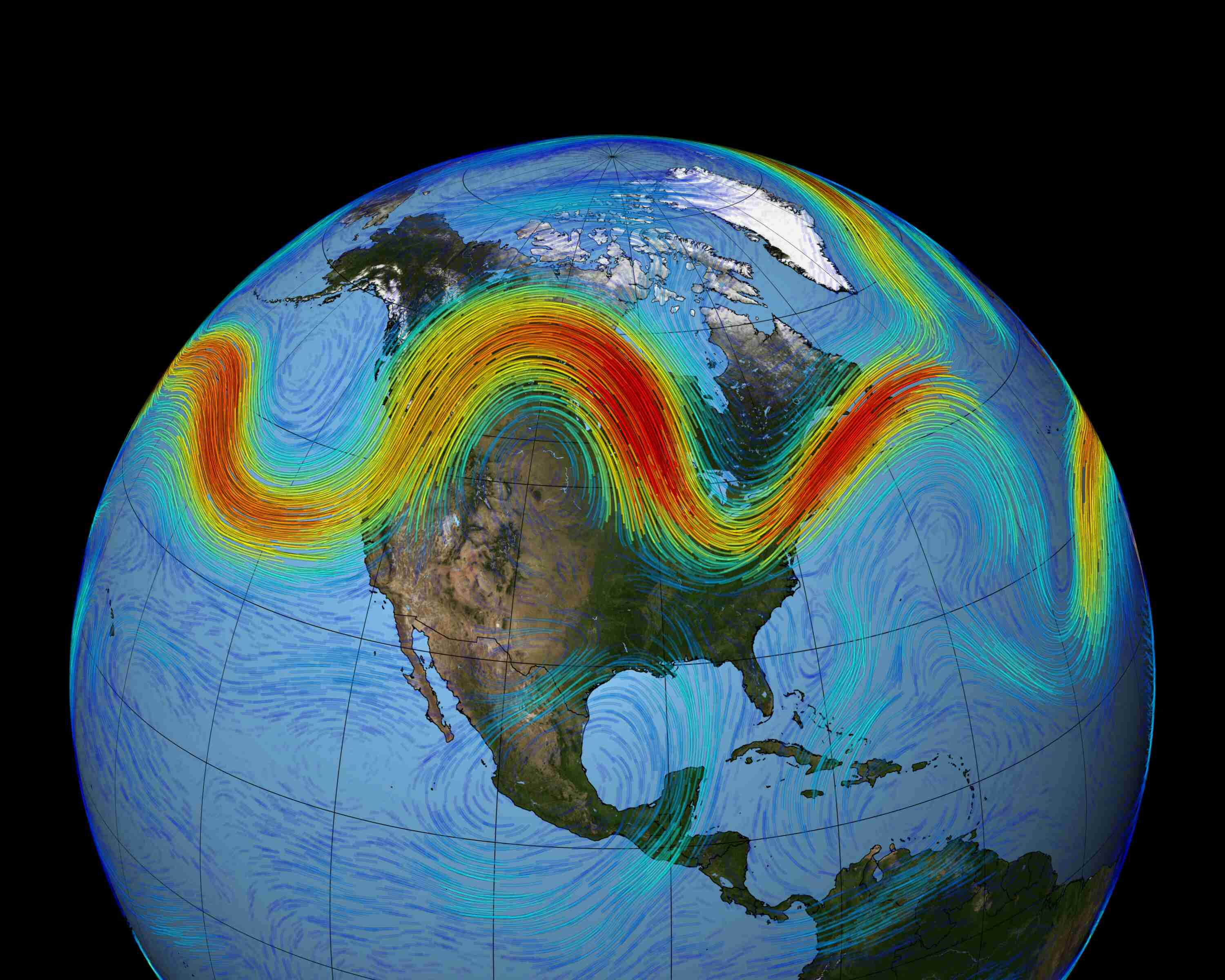
The Jet Stream is a fascinating atmospheric phenomenon that plays a crucial role in shaping weather patterns across the globe. This high-altitude, fast-flowing air current influences everything from air travel to climate conditions, making it a topic of great interest for geographers and meteorologists alike. In this article, we will delve into 15 intriguing facts about the Jet Stream, shedding light on its formation, characteristics, and impact on weather systems. From its discovery by pioneering aviators to its role in transatlantic flights and climate change, the Jet Stream holds many secrets waiting to be uncovered. So, buckle up and join us on an exciting journey through the mysteries of this powerful air current.
Key Takeaways:
- The jet stream is like a super-fast wind highway high up in the sky, influencing weather, flight times, and even ocean currents with its powerful speeds and seasonal variations.
- Understanding the jet stream helps us predict and comprehend weather patterns, flight routes, and climate changes, making it a crucial element for meteorologists and climatologists to study and monitor.
What is the jet stream?
The jet stream refers to narrow bands of strong winds that blow in the upper atmosphere, typically at altitudes above 20,000 feet.
Two main jet streams
There are two main jet streams: the polar jet stream and the subtropical jet stream. They occur in the Northern Hemisphere and the Southern Hemisphere.
Speeds reaching over 200 mph
The jet stream can reach staggering speeds of over 200 miles per hour, making it one of the fastest wind systems on Earth.
Influence on weather patterns
The jet stream plays a crucial role in determining weather patterns by steering storms and separating different air masses.
Effects on flight times
Aircraft can benefit from the jet stream, as flying with the wind can significantly reduce travel time, while flying against it can prolong flights.
Seasonal variations
The jet stream’s position and strength vary seasonally. It tends to be stronger and further north during winter and weaker and further south during summer.
Rossby waves
The jet stream is influenced by Rossby waves, large-scale meanders in the atmosphere that can cause the jet stream to become wavy and shift its position.
Impact on climate change
Climate change can affect the jet stream, leading to more extreme weather events such as heatwaves, cold spells, and prolonged droughts.
Tropopause boundary
The jet stream is located near the tropopause, the boundary between the troposphere and the stratosphere.
Connection to air travel
Commercial airlines closely monitor the jet stream to optimize flight routes and fuel efficiency.
Transatlantic flights
The strong westerly jet stream often facilitates faster eastbound transatlantic flights, allowing planes to reach their destinations quicker.
Impact on ocean currents
The jet stream can influence ocean currents, particularly in regions where the wind interacts with the surface of the ocean.
Great variability
The jet stream can exhibit significant variability, leading to fluctuations in weather patterns, temperature extremes, and storm tracks.
Role in severe weather events
The jet stream can contribute to the formation of severe weather events like hurricanes, tornadoes, and intense thunderstorms.
Discovering the jet stream
The jet stream was discovered by pioneering Japanese meteorologist Wasaburo Ooishi in the early 1920s.
These 15 intriguing and essential facts about the jet stream demonstrate its significant influence on global weather patterns, air travel, and climate conditions. Understanding the jet stream’s behavior is vital for meteorologists and climatologists as they strive to predict and comprehend our ever-changing weather systems.
Conclusion
The jet stream is a fascinating phenomenon that plays a crucial role in our planet’s weather patterns. From its meandering path to its incredible speed, there are many intriguing facts about the jet stream that highlight its significance. Understanding how the jet stream works is not only important for meteorologists and scientists, but also for everyday individuals who want to grasp the dynamics of weather systems.
With its ability to influence weather patterns across continents, the jet stream has a significant impact on the movement of storms, temperature patterns, and even air travel. Learning about the jet stream can help us better comprehend the interconnectedness of our planet’s climate and make informed decisions about how we adapt and prepare for weather events.
Next time you hear about the jet stream in the news or experience its effects firsthand, remember these intriguing facts and appreciate the incredible power and complexity of our planet’s atmospheric systems.
FAQs
1. What is the jet stream?
The jet stream is a narrow band of strong winds that flow in the upper levels of the atmosphere, typically at altitudes of 20,000 to 40,000 feet.
2. Which direction does the jet stream flow?
The jet stream generally flows from west to east, but its path can be influenced by various factors such as mountains and large temperature gradients.
3. How fast does the jet stream move?
The speed of the jet stream can vary, but it typically ranges from 100 to 250 miles per hour.
4. What causes the jet stream?
The jet stream is primarily caused by the temperature difference between warm and cold air masses, as well as the rotation of the Earth.
5. What is the impact of the jet stream on weather?
The jet stream plays a crucial role in the formation and movement of weather systems. It can enhance or hinder storm development, influence temperature patterns, and impact air travel routes.
Was this page helpful?
Our commitment to delivering trustworthy and engaging content is at the heart of what we do. Each fact on our site is contributed by real users like you, bringing a wealth of diverse insights and information. To ensure the highest standards of accuracy and reliability, our dedicated editors meticulously review each submission. This process guarantees that the facts we share are not only fascinating but also credible. Trust in our commitment to quality and authenticity as you explore and learn with us.
